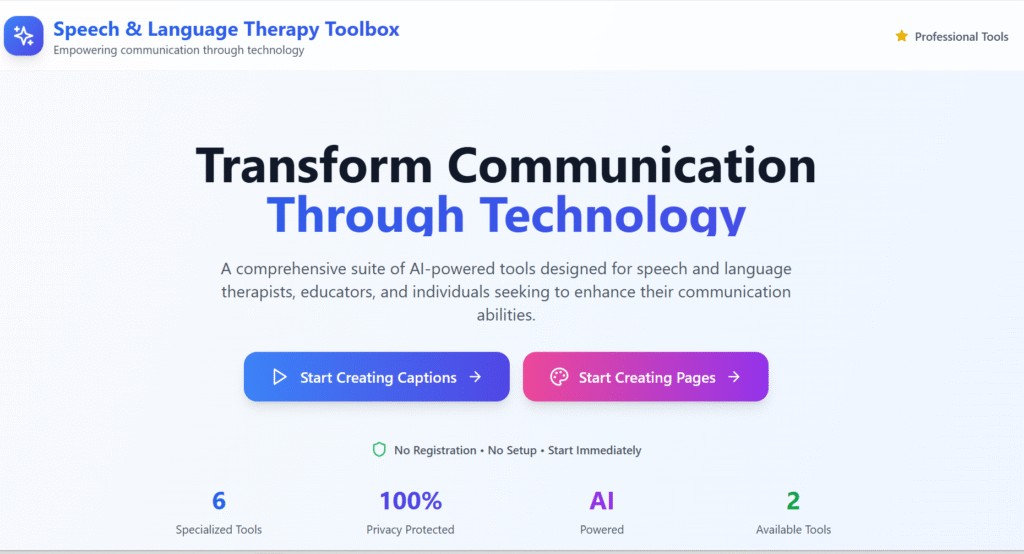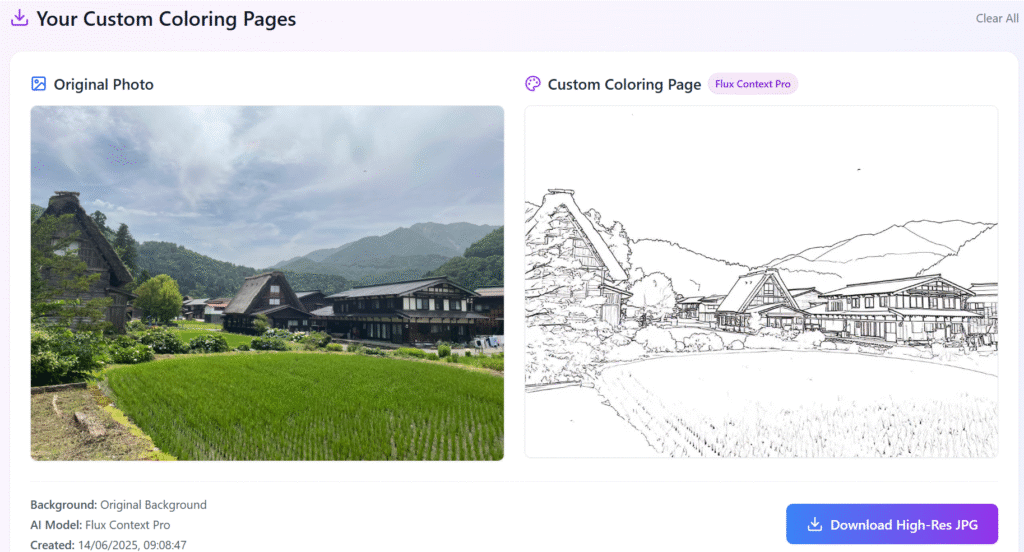Speech Therapy AI Site is platform with Generative AI Tools designed specifically for speech and language therapy professionals. Born from a personal need and built through vibecoding, this project demonstrates how rapid prototyping can solve immediate, tangible problems in specialized fields.
The project is ongoing, adding new features and tools as the need arises. This is also an opportunity to learn about vibecoding and its potential impact to bootstrap solutions at a very low cost, both for entrepreneurship, or to develop hyper customised tools for very specific contexts, that previously may have had no access to technological solutions.
The Problem: When Technology Fails Real People
My wife, a speech and language therapist, was working with a hearing-impaired patient learning sign language. The existing free transcription apps were frustrating barriers rather than helpful tools – they delivered massive text blocks with significant delays, requiring users to record, send, and wait. This workflow made natural conversation impossible, particularly challenging for someone already navigating communication difficulties.
Traditional transcription tools failed because they weren’t designed for the nuanced needs of therapeutic communication, where real-time interaction and speaker identification are crucial for effective treatment.

The Vibecoding Solution: From Problem to Prototype in Hours
Having spent nearly two years working with generative AI tools in education (though not as a programmer), I decided to test the limits of vibecoding for solving this specific problem. On a Saturday morning, I dedicated just 4 hours to building a functional solution.
Technology Stack:
- Bolt.new for rapid web application development
- Claude Code + VS Code for AI-assisted coding
- Deepgram API for real-time speech recognition
- Replicate API for additional AI capabilities
Key Features Developed:
- Real-time speech transcription with minimal latency
- Speaker identification with color-coded output
- Clean, accessible interface designed for therapeutic settings
- Live subtitle-style presentation of conversations
The Vibecoding Advantage: Speed, Specificity, and Iteration
This project exemplifies the power of vibecoding – the practice of rapidly building functional prototypes using AI-assisted development tools. Rather than spending months on traditional development cycles, vibecoding enabled me to:
Rapid Problem-Solution Fit: From identifying the problem to deploying a working solution in a single morning session, allowing immediate user feedback and iteration.
Context-Specific Design: Unlike generic transcription tools, the solution was built specifically for therapeutic communication needs, incorporating features like speaker identification and real-time processing that are crucial for this use case.
Low-Cost Validation: Before investing significant resources, we could test whether the approach would actually improve therapeutic outcomes for the specific patient population.
Immediate Impact: The therapist could use the tool in sessions the following week, providing instant value and real-world testing.

Beyond Prototyping: The Strategic Value of Small-Scale Solutions
While this tool serves a specific need for a small user base, it demonstrates several important principles for modern problem-solving:
Specialized Solutions Over Generic Tools: Sometimes the best solution isn’t a massive platform but a focused tool that solves one problem exceptionally well for a specific audience.
AI-Enabled Accessibility: By combining speech recognition APIs with thoughtful UX design, we can create powerful accessibility tools that were previously complex and expensive to develop.
Professional Empowerment: Rather than waiting for commercial solutions, professionals can increasingly solve their own workflow challenges using AI-assisted development.
Validation Before Scale: Starting with a working prototype allows for real user feedback before making larger investments in development or marketing.
Technical Architecture and Implementation
The platform leverages modern web technologies and AI APIs to deliver professional-grade functionality:
- Frontend: Built with modern JavaScript frameworks for responsive, real-time UI updates
- Speech Processing: Deepgram’s advanced speech-to-text API provides accurate, low-latency transcription
- Speaker Diarization: Automatic speaker identification ensures clear communication attribution
- Real-time Updates: WebSocket connections enable live transcription without page refreshes
The entire application runs efficiently on standard web hosting, making it accessible and maintainable without complex infrastructure requirements.
Results and Impact
The immediate impact was transformative for the therapeutic relationship. The patient could follow conversations naturally, participate more actively in sessions, and the therapist could focus on treatment rather than communication logistics.
Key outcomes include:
- Elimination of communication delays during therapy sessions
- Improved patient engagement and participation
- Reduced cognitive load for both therapist and patient
- Enhanced accessibility for hearing-impaired clients
The Future of Vibecoding in Professional Problem-Solving
This project illustrates a broader trend: professionals across industries can now solve specialized problems through rapid prototyping with AI assistance. The barriers between identifying a problem and testing a solution continue to shrink.
For scaling to thousands of users, professional development teams would be essential for security, reliability, and performance optimization. However, for targeted use cases with specific user groups, vibecoded solutions can provide immediate value at minimal cost.
Key Takeaways:
- Speed to Solution: Vibecoding enables same-day problem-solving for specific professional needs
- User-Centered Design: Building for a specific user (my wife) resulted in better design for the broader user group (speech therapists)
- AI as Enabler: Modern AI APIs make complex functionality accessible to non-traditional developers
- Prototype-First Approach: Testing with real users before major development investment reduces risk and improves outcomes
Scaling and Professional Development
While vibecoding is powerful for prototyping and small-scale solutions, this project also highlights the importance of professional development for scaling. Security, compliance with healthcare regulations, and performance optimization require expertise beyond rapid prototyping.
The vibecoded prototype serves as both a functional tool and a proof-of-concept for larger development efforts, demonstrating market need and technical feasibility before significant investment.
Through this project, I’ve validated that vibecoding can bridge the gap between identifying problems and testing solutions, particularly in specialized professional contexts where commercial tools may not address specific needs.
This tool was featured on Product Hunt and represents ongoing exploration of AI-powered solutions for healthcare and education.
